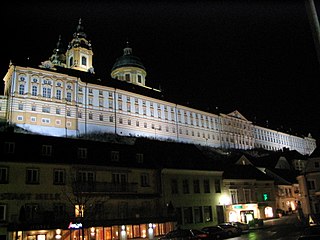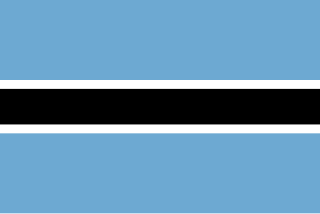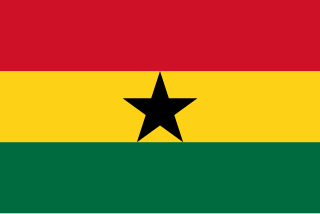Education in Australia encompasses the sectors of early childhood education (preschool) and primary education, followed by secondary education, tertiary education (universities and Registered Training Organisations. Regulation and funding of education is primarily the responsibility of the States and territories, however the Australian Government also plays a funding role. Education in Australia is compulsory between the ages of four, five, or six and fifteen, sixteen or seventeen, depending on the State or territory and date of birth.

A student is primarily a person enrolled in a school or other educational institution and who is under learning with goals of acquiring knowledge, developing professions and achieving employment at desired field. In the broader sense, a student is anyone who applies themselves to the intensive intellectual engagement with some matter necessary to master it as part of some practical affair in which such mastery is basic or decisive.

A gymnasium is a type of school with a strong emphasis on academic learning, and providing advanced secondary education in some parts of Europe comparable to British grammar schools, sixth form colleges and US preparatory high schools. In its current meaning, it usually refers to secondary schools focused on preparing students to enter a university for advanced academic study. Before the 20th century, the system of gymnasiums was a widespread feature of educational systems throughout many countries of central, north, eastern and southern Europe.
A middle school is an educational stage which exists in some countries, providing education between primary school and secondary school. The concept, regulation and classification of middle schools, as well as the ages covered, vary between, and sometimes within, countries.
Education in Malaysia is overseen by the Ministry of Education. Although education is the responsibility of the Federal Government, each state and federal territory has an Education Department to co-ordinate educational matters in its territory. The main legislation governing education is the Education Act 1996.
State schools or public schools are generally primary or secondary schools which are mandated to offer education to all children without charge, and they are funded in whole or in part by taxation.
The levels of Ireland's education are primary, secondary and higher education. In recent years further education has grown immensely. Growth in the economy since the 1960s has driven much of the change in the education system. For universities there are student service fees, which students are required to pay on registration, to cover examinations, insurance and registration costs.
A secondary school describes an institution that provides secondary education and also usually includes the building where this takes place. Some secondary schools provide both lower secondary education and upper secondary education i.e. levels 2 and 3 of the ISCED scale, but these can also be provided in separate schools, as in the American middle and high school system. In the UK, elite public schools typically admit pupils between the ages of 13 and 18. UK state schools accommodate pupils between the ages of 11 to 18.
The education system in Tasmania comprises the education of children from their early years, through kindergarten, primary and high school, and tertiary education in universities and vocational education and training organisations. The system is delivered by the government-run K-12 schooling system, and numerous independent schools and colleges, most of which are controlled or sponsored by religious organisations. Public education in Tasmania is managed primarily by the Tasmanian Department of Education. The Department is responsible for all aspects of education in Tasmania including schooling, adult education, the State Library and TasTAFE, a vocational tertiary institution with many campuses around the state.
Tenth grade or grade 10 is the tenth year of school post-kindergarten or the tenth year after the first introductory year upon entering compulsory schooling. In many parts of the world, the students are 15/16 years of age, depending on when their birthday occurs. The variants of 10th grade in various countries are described below.
Twelfth grade, senior year, or grade 12 is the final year of secondary school in most of North America. In other regions, it may also be referred to as class 12 or Year 13. In most countries, students are usually the ages of 17 and 18 years old. Some countries have a thirteenth grade, while other countries do not have a 12th grade/year at all. Twelfth grade is typically the last year of high school.

Education in Botswana is provided by public schools and private schools. Education in Botswana is governed by Ministry of Basic Education.
Educational stages are subdivisions of formal learning, typically covering early childhood education, primary education, secondary education and tertiary education. The United Nations Educational, Scientific and Cultural Organization (UNESCO) recognizes seven levels of education in its International Standard Classification of Education system. UNESCO's International Bureau of Education maintains a database of country-specific education systems and their stages.

Before the arrival of European settlers, who introduced a formal education system addressed to the elites, education in Ghana was mainly informal and based on apprenticeship. Pre-Independent Ghana was known as the Gold Coast. The economy of the pre-colonial Gold Coast was dependent on subsistence farming, in which farm produce was shared within households, and members of each household specialized in providing necessities. These included cooking utilities, shelter, clothing, and furniture. Trade with other households was therefore practiced on a very small scale. This made economic activities in the pre-colonial Gold Coast, a family institution: family-owned and family-controlled. As such, there was no need for employment outside the household that would have otherwise called for disciplines, values, and skills through a formal education system. After colonization, Ghana's economy became a hybrid of subsistence and formal economy.

Education in Western Australia consists of public and private schools in the state of Western Australia, including public and private universities and TAFE colleges. Public school education is supervised by the Department of Education, which forms part of the Government of Western Australia. The School Curriculum and Standards Authority is an independent statutory authority responsible for developing a curriculum and associated standards in all schools, and for ensuring standards of student achievement, and for the assessment and certification according to those standards.

Education in Victoria, Australia is supervised by the Department of Education and Training (DET), which is part of the State Government and whose role is to 'provide policy and planning advice for the delivery of education'. It acts as advisor to two state ministers, that for Education and for Children and Early Childhood Development.
Education in Eswatini includes pre-school, primary, secondary and high schools, for general education and training (GET), and universities and colleges at tertiary level.

Education in Malta is compulsory through age sixteen and is offered through three different providers: the state, the church, and the private sector. The state is responsible for promoting education and instruction and ensuring universal access to education for all Maltese citizens the existence of a system of schools and institutions accessible to all Maltese citizens. The objectives of education in Malta include intellectual and moral development and the preparation of every citizen to contribute productively to the national economy. Although Maltese citizens had access to education during the Arab administration of 870 to 1090, the arrival of a number of religious orders in the following four centuries brought religious-based education to the island for wealthy families. The arrival of the Knights Hospitaller saw the establishment of the University of Malta, around which a number of primary, secondary and post-secondary institutions were established. Education in Malta has been universally available at the primary level since the ejection of the Knights Hospitaller by the French in 1798, when state-funded elementary schooling was established. In 1878, English replaced Italian as the primary language of instruction, and education was made compulsory in 1946 in response to a number of children not attending school due to poverty between World Wars One and Two. The age at which education became compulsory was lowered to five years in 1988

The history of state education in Queensland commences with the Moreton Bay penal settlement of New South Wales in Australia, which became the responsibility of the Queensland Government after the Separation of Queensland from New South Wales in 1859.







